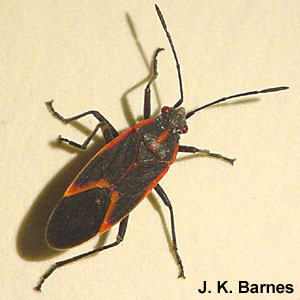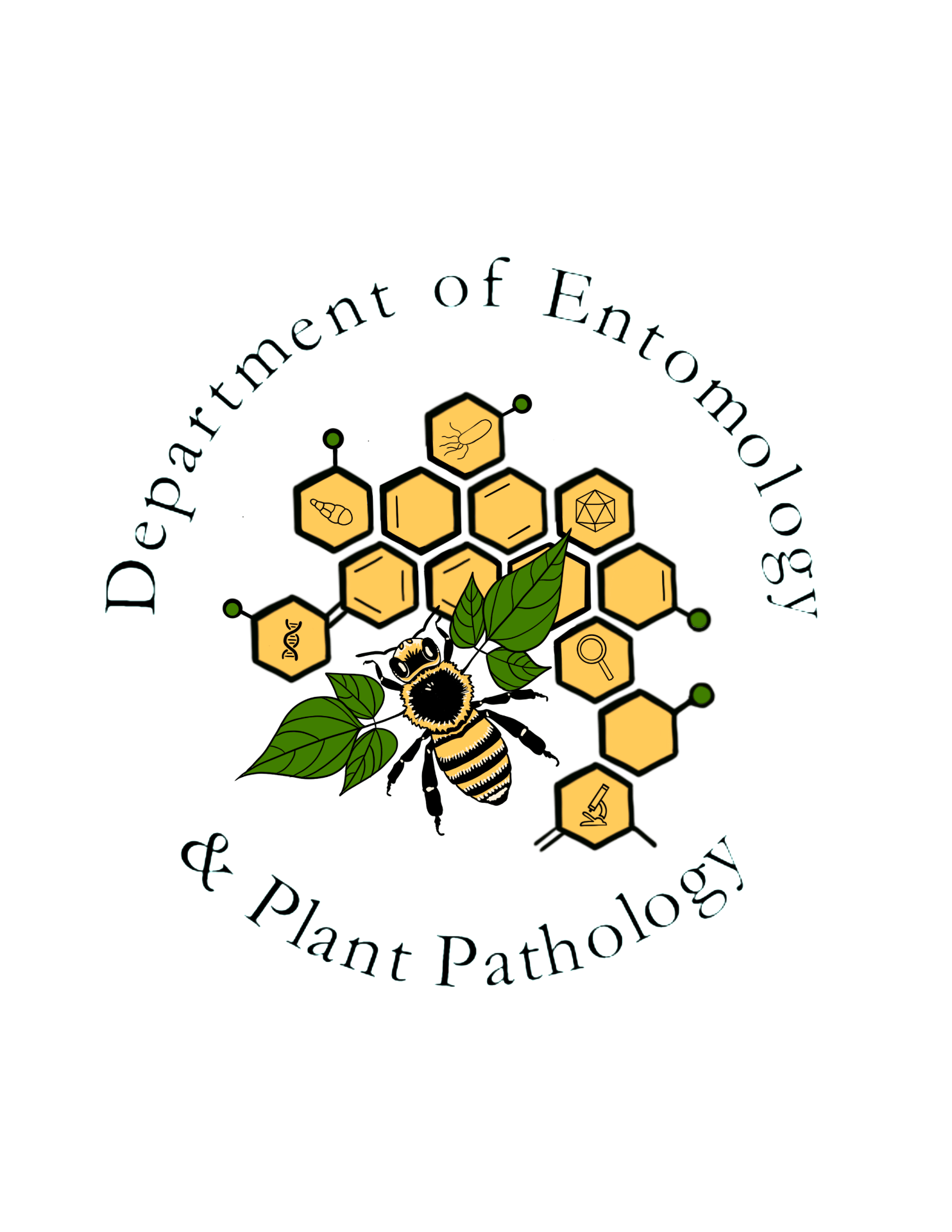Boxelder bug
Order: Hemiptera: Heteroptera
Family: Rhopalidae
Genus and species: Boisea trivittata (Say)

Boxelder bugs are native to the southwest, but their range has expanded in recent decades. They appeared in New England in the 1940’s and 1950’s as boxelder trees were planted in towns of the Northeast. They are similar in appearance to golden raintree bugs, but they are distinguished by the three longitudinal stripes on the prothorax, rather than two, and by the red markings on the wings. Boxelder bugs sometimes gather in large numbers in warm areas, especially on the south and west sides of houses and on nearby vegetation and other substrates in spring and fall. The bugs sometimes enter Arkansas homes in fall. In natural settings, they pass the winter in forest litter and other protected places, but homes offer an attractive alternative. The species feeds almost exclusively on the boxelder tree (Acer negundo), especially the seeds of female trees; it is rarely found in male trees. The bugs have also been reported feeding on a few other plant species, especially sugar maple. After leaving their overwintering spots in spring, the bugs congregate primarily under female boxelder trees. They move into the trees when seeds start to develop. Inside homes, the bugs are not likely to feed on or damage the homeowner’s belongings, and they do not usually bite. However, they can be a nuisance, especially when they stain fabrics with their excrement and when they begin to wander about on warmer winter days. Furthermore, some individuals may have allergic reactions to the bugs. Overwintering bugs are known to feed on molting and dead individuals of their own species. Cannibalism apparently significantly improves survivorship among overwintering boxelder bugs.
